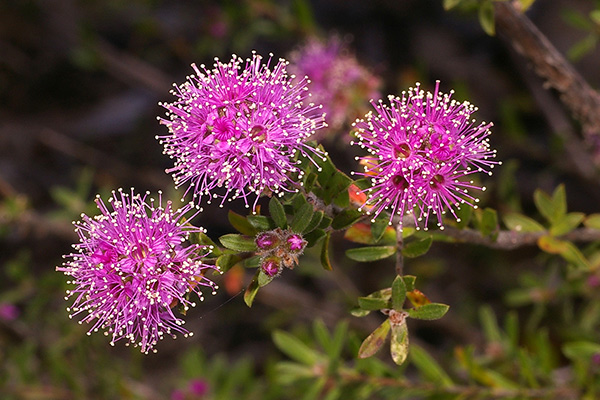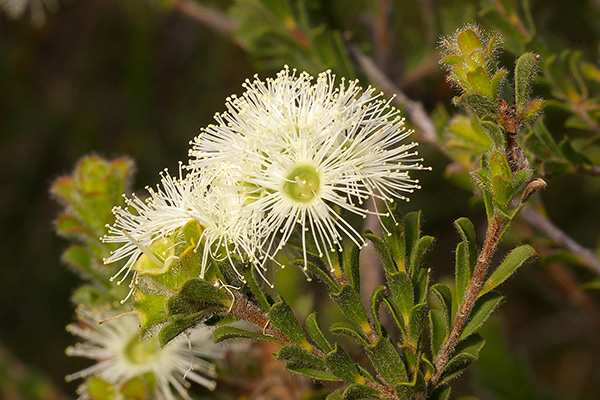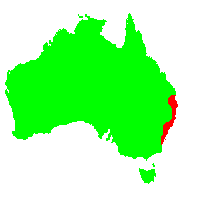General Description:
Kunzea is closely related to the genus Callistemon (the bottlebrushes) and also bears some similarity to Melaleuca and Leptospermum. There are about 40 species occurring in all states and territories. One species also occurs in New Zealand. They are small to medium woody shrubs and the majority occur naturally in south Western Australia.
Some of the main differences between Kunzea and its close relatives are:
- The five sepals and petals are deciduous (persistent in Callistemon).
- The stamens are longer than the petals (shorter in Leptospermum).
- The stamens are free (united in five bundles in Melaleuca).
- Seed is released from the ripe fruit annually (usually retained on the plant in the other three genera).
Kunzea capitata is a small, spreading or erect shrub commonly about 0.5 to 1 metre in height but sometimes reaching 2 metres. The leaves are elliptical to oval shaped, up to 10 mm long and usually covered with short hairs. The flowers are usually pink to purple and occur in clusters at the ends of the branches. White flowered forms are also known. Flowering occurs in spring and the flowers are followed by small 1-celled fruits which release numerous small seeds when ripe.
This species has been in cultivation for many years but is not widely grown. It is hardy in well drained, moist soils and grows well in sunny or lightly shaded positions. It withstands at least moderate frost.
Propagation is easy from both seed and cuttings. If seed is being collected, the plants need to be kept under observation or the seed will be lost.

Kunzea capitata: The ‘normal’ pink/purple flowered form
Photo: Brian Walters

Kunzea capitata: The white flowered form
Photo: Brian Walters
 Australian Native Plants Society (Australia)
Australian Native Plants Society (Australia)